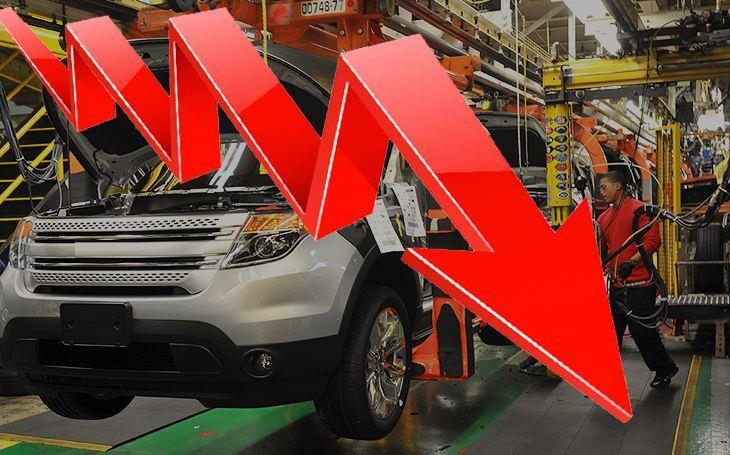News
19
Sep
2019
Fitment panel rejects GST rate cut for auto.
ET Intelligence Group: Will a GST cut in autos rev up the sluggish sales engine? It isn’t an easy question to answer as the industry’s structure is sufficiently complex for tax cuts to revive demand immediately.
For starters, the auto sales value chain in India has many more decision points than just end-user ownership costs. High-frequency data capture wholesale statistics – what OEMs sell to dealers. The end-user data – what dealers sell to retailers – are rarely published, and certainly not with the granularity and regularity that qualify OEM statistics.
So, the spotlight is on dealer financing, an aspect of the sales value chain that has scant little to do with vehicle taxation. Cutting GST would not improve demand immediately from dealers, unless they have more money to buy vehicles from OEMs.
In the current situation, wholesale volumes have shrunk due to inventory correction at the dealer end. Many automakers have said that retail sales have not been as badly battered as the wholesale business.
Shashank Srivastava, head of sales and marketing at Maruti Suzuki, said that monthly sales at the retail level are improving. Maruti has reduced its inventory to around a month. However, the inventory level of two-wheelers and commercial vehicles remains elevated, restricting their dealers’ ability to buy fresh stock.
Now, inventory management at auto companies is undergoing a new normal as banks have turned more circumspect. They have increased collateral for inventory financing. Earlier, inventory financing bankers treated cars in depot as collateral for tendering loans: Now, they want 25-30% as collateral for inventory financing, limiting the ability of dealers to buy more cars.
Furthermore, monthly filing of GST returns when inventories are high has elongated the working capital cycle for dealers. As a result, the usual festival period inventory boost to wholesale volumes is absent this time.
Theoretically, tax cuts lower the cost of goods and stimulate demand – especially when a recovery is V-shaped. However, given the consensus that this recovery will be U shaped, any tax cut may have a higher impact on two-wheeler sales, as witnessed in 2015.
According to UBS analysis, overall economic growth and segment-specific factors have a more significant influence on the segment than changes in the GST rate, and there is mixed evidence that GST (previously excise duty) rate cuts boost demand.
In FY10, volumes recovered after the tax cuts as they were supported by broader economic recovery. In FY15, cuts only affected two-wheeler sales volumes. Given negligible discounts on two-wheelers, any GST cut would result in higher demand mainly for these vehicles due to lower prices.
Changes in emission norms, and consequent shrinkage in the product range at the biggest automaker Maruti Suzuki have hurt the overall industry. So, there are factors beyond taxes – and prices - that have an impact on demand.
Finally, there is no consensus on the timing of the GST cut. Some favour an immediate reduction, while others are looking at a cut closer to the period when the new emission norms kick in.
https://auto.economictimes.indiatimes.com/news/industry/fitment-panel-rejects-gst-rate-cut-for-auto/71188033
For starters, the auto sales value chain in India has many more decision points than just end-user ownership costs. High-frequency data capture wholesale statistics – what OEMs sell to dealers. The end-user data – what dealers sell to retailers – are rarely published, and certainly not with the granularity and regularity that qualify OEM statistics.
So, the spotlight is on dealer financing, an aspect of the sales value chain that has scant little to do with vehicle taxation. Cutting GST would not improve demand immediately from dealers, unless they have more money to buy vehicles from OEMs.
In the current situation, wholesale volumes have shrunk due to inventory correction at the dealer end. Many automakers have said that retail sales have not been as badly battered as the wholesale business.
Shashank Srivastava, head of sales and marketing at Maruti Suzuki, said that monthly sales at the retail level are improving. Maruti has reduced its inventory to around a month. However, the inventory level of two-wheelers and commercial vehicles remains elevated, restricting their dealers’ ability to buy fresh stock.
Now, inventory management at auto companies is undergoing a new normal as banks have turned more circumspect. They have increased collateral for inventory financing. Earlier, inventory financing bankers treated cars in depot as collateral for tendering loans: Now, they want 25-30% as collateral for inventory financing, limiting the ability of dealers to buy more cars.
Furthermore, monthly filing of GST returns when inventories are high has elongated the working capital cycle for dealers. As a result, the usual festival period inventory boost to wholesale volumes is absent this time.
Theoretically, tax cuts lower the cost of goods and stimulate demand – especially when a recovery is V-shaped. However, given the consensus that this recovery will be U shaped, any tax cut may have a higher impact on two-wheeler sales, as witnessed in 2015.
According to UBS analysis, overall economic growth and segment-specific factors have a more significant influence on the segment than changes in the GST rate, and there is mixed evidence that GST (previously excise duty) rate cuts boost demand.
In FY10, volumes recovered after the tax cuts as they were supported by broader economic recovery. In FY15, cuts only affected two-wheeler sales volumes. Given negligible discounts on two-wheelers, any GST cut would result in higher demand mainly for these vehicles due to lower prices.
Changes in emission norms, and consequent shrinkage in the product range at the biggest automaker Maruti Suzuki have hurt the overall industry. So, there are factors beyond taxes – and prices - that have an impact on demand.
Finally, there is no consensus on the timing of the GST cut. Some favour an immediate reduction, while others are looking at a cut closer to the period when the new emission norms kick in.
https://auto.economictimes.indiatimes.com/news/industry/fitment-panel-rejects-gst-rate-cut-for-auto/71188033
